Teacher wellbeing is not just a personal issue; it’s a professional necessity. It’s closely tied to educator success and student outcomes, and a lack of it is proven to lead to staff burnout, disengagement and attrition. Therefore, it is important that schools as employers actively encourage, nurture and sustain teacher wellbeing initiatives to ensure teacher retention, satisfaction and whole school outcomes.
While issues such as workload and student behaviour are often front and centre in discussions around teacher stress, the issue runs much deeper... The most recent literature, as well as the voices of teachers themselves, highlights the need to move beyond resilience training or reactive supports. To make lasting changes, we must think and work strategically, develop the skills and capacities of our leaders and staff, invest in strong people management practices and foster the social capital that enables school teams to truly thrive.
The wellbeing of all staff, not just teachers, requires our focused attention. Our teacher wellbeing surveys capture data across the whole school workforce, including leaders, administrative staff and non-teaching roles. This comprehensive picture enables schools to develop a tailored approach to address the unique needs of their people, within their specific context. While the challenges are significant, there are solutions. This article/report explores what the evidence says works to improve teacher wellbeing, and what thousands of teachers across more than 60 Australian schools are telling us they need.
Importantly, it reminds us that while we wait for broader system reforms to catch up, schools still have the power to make an impact now. By understanding the real needs of their staff and taking deliberate, strategic action, school leaders can create workplaces worth showing up to each day - where teachers and teams are empowered to do the meaningful, life-changing work they were called to do.
This article/report includes:
- A snapshot of the current state of teacher wellbeing in Australia
- Key stressors and risk factors impacting teacher wellbeing
- The ripple effects of poor teacher wellbeing on students, schools and the community
- Data insights from our teacher wellbeing surveys across 60+ schools
- What teachers themselves say they need to feel supported, valued and well
- Evidence-based strategies and school-wide initiatives that work
- How schools can take a strategic, data-informed approach to staff and teacher wellbeing
The Problem: Why Teacher Wellbeing Demands Urgent Action
A recent Black Dog Institute survey (2023) of 4,000 Australian teachers revealed some confronting statistics:

of teacher absences in the previous month were linked to a mental health or emotional problem

reported moderate to extremely severe symptoms of depression, compared to just 12.1% in the general population
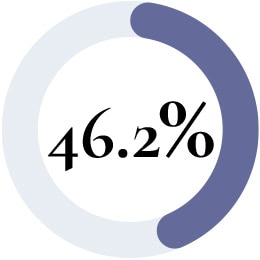
reported symptoms of anxiety, compared to 9% of the general population
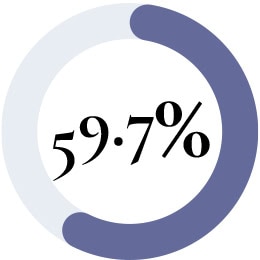
reported high stress levels, compared to 11.4% in the general population
Perhaps the most alarming finding from this survey and report is that almost half of Australian teachers are considering leaving the profession within the next 12 months.
These figures are more than statistics. They represent a workforce under immense strain, a system at risk, and ultimately, a challenge that affects the quality of education our students receive. When teacher wellbeing is compromised--when teachers are unwell, dissatisfied, demoralised and/or disengaged-- students cannot thrive and school outcomes are put at risk.
This picture is echoed in broader research over the past few years. Recent inquiries have shown that educators are not only facing rising stress levels, but also feelings of anger, isolation, and disconnection from their work. Australian teachers have lodged more mental health claims with WorkCover than any other profession, including healthcare workers (Lemon & Tuner, 2024). In NSW alone, studies indicate that half of teachers experience psychological distress, while two-thirds endure burnout (Corbett et al., 2023; NSW Public Service Commission, 2022).
The data from our teacher wellbeing surveys paint a similar picture. Across the schools we work with, on average:

of teachers report feeling stressed, worried, or anxious often

report feeling burned out
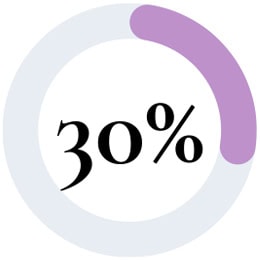
feel mentally and emotionally unwell
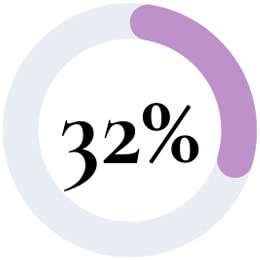
feel physically unwell
But here’s the critical insight: while these averages are alarming, they hide the nuances that matter most. Every school tells its own story. Our data shows that some schools reveal unique strengths and protective factors, while others highlight specific challenges around teacher wellbeing, mental health, burnout and school-specific drivers of teacher wellbeing. This is why teacher wellbeing data and teacher voice are essential for each individual school. A teacher wellbeing survey and associated results and trends provide a clear map for leaders to take targeted, meaningful action rather than relying on generic solutions and cookie-cutter approaches.
The Cost of Ignoring Teacher Wellbeing
When teacher wellbeing is overlooked, the effects extend far beyond the staffroom. The consequences ripple through classrooms, schools, communities, and even worldwide.
STUDENTS FEEL IT FIRST
Research continues to show that student wellbeing and achievement are closely tied to teacher wellbeing. When teachers are stressed or burnt out, students experience increased stress levels (Oberle & Schonert-Reichl, 2016), reduced motivation (Shen et al., 2015), and lower academic and behavioural outcomes (McCallum, 2021; McCallum & Price, 2010; Wentzel, 2010).
What’s more, teacher burnout and attrition have a direct, detrimental impact on students’ educational outcomes, including academic performance, test scores and overall wellbeing (Herman et al., 2018; von der Embse et al., 2016). Teachers who are overwhelmed or exiting the profession simply can’t provide the consistent, high-quality support students need to thrive. Emotional exhaustion in teachers also reduces their classroom effectiveness and ability to connect with students (Aloe et al., 2014; Oberle & Schonert-Reichl, 2016).
In short, when teachers struggle, students often do too.
Beyond the school gates, the effects extend to families and the broader economy. As Lemon and Turner (2024) note, teacher wellbeing also impacts “the emotional wellbeing and economic productivity of parents”. This is not just an education issue - it’s a societal one.
WE’RE LOSING OUR WORKFORCE
Poor teacher wellbeing is now one of the leading drivers of attrition. According to findings by Goddard and Goddard (2006), there is a strong association between intention to leave the profession and teacher burnout, and subsequently high rates of attrition among early career teachers across numerous countries worldwide. However, since the onset of the pandemic, we are losing teachers, at all levels of their careers, at a rate faster than ever before. A 2019 study of over 2,400 Australian teachers found that more than half planned to leave the profession within the next 10 years. Burnout, exhaustion, and disillusionment are pushing educators out, and the effects are already showing.
Australia is now facing a critical teacher shortage. UNESCO (2023) estimates that 44 million new teachers will be needed globally to meet education demand and Australia is now facing a critical teacher shortage. Locally, modelling of teacher supply and demand shows that the teacher supply gap in Australia is widening (Monash University, 2024). This shortage is recognised as a significant risk to improving student outcomes, both now and in the future.
“When teacher wellbeing is overlooked, the effects extend far beyond the staffroom.
The consequences ripple through classrooms, schools, communities, and even worldwide. ”
BEHIND THE DATA ARE PEOPLE
It’s easy to talk about numbers, but this is fundamentally a human issue. Our teachers and school staff are not just professionals - they’re also parents, carers and friends. And right now, they’re emotionally exhausted. The personal toll of the job is higher than ever. Chronic stress, burnout and emotional fatigue are leading to reduced job satisfaction, lower self-efficacy and accomplishment, and rising attrition rates.
The system (and society) may view teachers as essential to delivering student and school outcomes, but we must remember, they’re people first.
WE’VE KNOWN THIS FOR YEARS
This isn’t a new conversation. Yet despite rising awareness, the gap between intention and meaningful action remains wide. If we’re serious about improving outcomes for students, we must get serious about the wellbeing of the people who teach and support them every day. That means shifting from reactive, surface-level responses to strategic, data-informed approaches that honour the complexity and humanity of our workforce.
What is leading to the teacher wellbeing crisis?
To unpack this issue at a teacher level, we must broaden our understanding of teacher wellbeing. Teacher wellbeing encompasses both their sense of personal wellbeing and their workplace wellbeing. It is essential that in education, we extend our conversation to one that acknowledges and addresses staff stressors and risk factors associated with the workplace, including teacher roles and leadership.
It is unfair to attribute the “wellbeing crisis” solely to a lack of teachers’ personal wellbeing and their lives outside of work, and then shrugging our shoulders and dismissing concerns with the rationale that “the pressures are simply part of the job.”
Over the past few years, the literature has outlined the leading teacher stressors, risks and reasons for wanting to or leaving the profession. These have been broken down below:
‘Boosting teacher wellbeing at the start of term helps combat attrition and burnout’ UNSW (2024)
Teachers reporting wanting to leave the profession are highlighting key determinants:
- Time pressure
- Disruptive student behaviour
- A lack of relevant professional learning opportunities
Teachers’ experience, needs and recommendations for promoting their health and wellbeing in Australia Corbet et al. (2024)
In Australia, the primary reasons cited for leaving the teaching profession were:
- High workload
- Lack of work/life balance
- Exhaustion and emotional detachment linked to burnout
- Feelings of diminished professional effectiveness
Additional sources of teacher stress stem from:
- Poor student behaviour
- Increasing reporting requirements
- Conflicts with colleagues and parents
- Educational policy and curriculum changes
Teacher mental health and burnout could halve the workforce, according to new data from the Black Dog Institute, 2023
Findings fromorm the report highlight stress attributed to:
- Unmanageable workloads
- Teacher shortages in their schools at the moment
- Teaching classes outside of their area of training regularly
Unravelling the wellbeing needs of Australian teachers: a qualitative inquiry Lemon and Turner, 2024
Stressors for teachers include:
- Excessive workload
- Poor work-life balance, not feeling safe at work
- Student behaviour
- Communicating with parents
- Administrative support
Data from our teacher wellbeing survey capturing perspectives across 60+ Australian Schools
The top stressors, as identified by teachers, are:
- Administrative tasks - 59%
- Managing difficult/challenging student behaviour - 54%
- Long working hours or excessive workload - 51%
- Lack of planning time - 50%
- Poor work/life balance - 40%
- Poor communication between leaders and staff - 37%
Overall, the recent literature and our teacher wellbeing survey data show that the following stressors significantly impact teacher wellbeing and require the attention of the system and schools:

Excessive and unmanageable workload
Driven by long working hours, insufficient planning time, administrative overload, increased reporting requirements, and the compounding impact of teacher shortages.

Student behaviour and complex needs
Rising disruptive behaviour, growing student wellbeing challenges and additional/complex learning needs place additional strain on teachers, especially without adequate support or training in positive behaviour approaches, trauma-informed practice, and inclusive strategies.

Poor communication and limited consultation
Inconsistent, unclear, or poorly managed communication systems, combined with limited opportunities for teachers input into decisions and school change, contribute to frustration, disengagement, and mistrust.

Lack of relevant, ongoing professional development
Insufficient access to meaningful learning opportunities such as coaching, mentoring, goal setting, and constructive feedback reduces teacher efficacy, motivation, and engagement.

Policy and curriculum pressures
Frequent changes in educational policy, curriculum expectations, and compliance requirements (especially in conjunction with limited opportunities for consultation and involvement in changes) create uncertainty and add to cognitive load.

Emotional strain and burnout
Escalating stress, exhaustion, and emotional detachment affect physical, mental, and emotional health. Without proactive support and teacher wellbeing strategies, these pressures risk attrition and reduced effectiveness.

Workplace relationships and psychological safety
Conflicts with colleagues or parents, feelings of being undervalued, and lack of trust or recognition amplify stress and erode a sense of belonging in the school community.
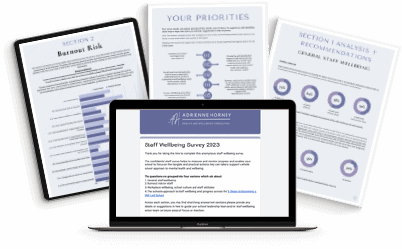
Know your numbers, your people, and your teacher wellbeing trends
It is important to note that every school’s data tells its own unique story. Our teacher wellbeing surveys help schools identify the top stressors affecting staff across the entire school, breaking down information across roles and/or subgroups of staff.
What we can do about it...
Despite alarming statistics, teacher wellbeing in Australia remains underexplored, too often framed as a “problem story” rather than a call to action. As the conversation evolves, solutions must be practical, evidence-informed, and context-driven.
Some current literature is beginning to explore the truth behind what schools and the system need to do to improve teacher wellbeing to ensure positive outcomes for our students, as well as the teachers and their families.
The current literature is pointing to approaches, initiatives and focus areas that teachers really need and want:
‘Boosting teacher wellbeing at the start of term helps combat attrition and burnout’ UNSW (2024)
How schools can sustain and support teacher wellbeing:
- Reduce workload: Streamline administrative tasks and review face-to-face teaching demands
- Invite teacher voice: Involve staff in decisions and explain the rationale behind tasks
- Build collaboration: Provide common planning time, create professional learning communities, foster peer mentoring, and cultivate a supportive staffroom culture
- Strengthen student relationships: Offer ongoing coaching, feedback, and goal-setting focused on improving teacher–student interactions
- Invest in professional learning: Prioritise opportunities (PL and coaching) to enhance high-quality teaching practices
- Support stress management: Provide resources, training, and strategies to manage workload and wellbeing effectively
‘Australian teachers’ conceptualisations of wellbeing at work’ Vo et al. (2024)
The five essentials teachers say matter most for their wellbeing:
- Safety: A secure environment, free from physical and psychological harm
- Support: Access to resources, emotional care, and practical help from leaders and colleagues
- Value: Recognition and respect for their contributions as key members of the school community
- Trust: Confidence in their professional judgment, autonomy in decision-making, and freedom to manage responsibilities effectively
- Balance: The ability to manage work demands while maintaining time and energy for personal life
‘Unravelling the wellbeing needs of Australian teachers: a Qualitative Inquiry’ Lemon and Turner (2024)
What effective teacher wellbeing strategies look like:
- Reduce stress at the source: Implement initiatives that address workload and pressure points
- Boost positive emotions and meaning: Create opportunities for teachers to feel accomplished and connected to their purpose
- Lead with care and consultation: Foster a leadership culture that prioritises wellbeing, respect, and trust
- Invest in professional growth: Provide ongoing learning and development opportunities
- Build a supportive community: Encourage collaboration, peer support, and strong team connections
Data from our teacher wellbeing survey capturing perspectives across 60+ Australian Schools and thousands of school staff
The top wellbeing initiatives teachers are suggesting on average:
- Reduction in workload - 53%
- Time off and flexible working schemes - 43%
- Improvement or more of a focus on student management, behaviour or wellbeing - 41%
- More/improved communication with the school’s leadership team - 40%
- More consultation or involvement in decision-making - 36%
- A more focused approach on staff wellbeing and mental health - 36%
Suggested solutions to improve staff and teacher wellbeing in our schools
If we want to improve the mental health and wellbeing of our teachers, staff and community, as well as promote teacher retention and build staff morale, satisfaction, and engagement, we must take a data-backed and systematic approach to assessing teacher wellbeing in our individual schools and at a system level.
KEY FINDINGS AND RECOMMENDATIONS
Drawing on both the literature and averages from our teacher wellbeing survey across 60+ schools, the following priorities emerge for schools, and for the education system more broadly, to strengthen and sustain teacher wellbeing:

Streamline and optimise teacher workload
Review workload expectations and administrative demands, reduce unnecessary tasks, and explore flexible work options. Equip teachers with strategies for time management and productivity to manage their daily responsibilities effectively.

Systematise student behaviour and wellbeing practices
Implement consistent school-wide systemised approaches to behaviour and wellbeing, underpinned by positive behaviour strategies, trauma-informed practices, restorative approaches, and explicit and in-context social-emotional learning opportunities

Help teachers meet complex and diverse student needs in inclusive and adaptive ways
Provide targeted support and ensure ongoing access to coaching, mentoring, and professional development to ensure classroom application

Improve communication systems
Develop clear, consistent, and transparent communication processes that reduce uncertainty, foster trust and keep teachers and staff informed about decisions, expectations, and changes

Embed meaningful consultation
Offer regular, multi-modal opportunities for staff to provide input on school priorities, change initiatives, and decisions that affect their work. Ensure that the feedback loop is closed and staff are updated following these consultative opportunities

Strengthen teacher engagement and professional identity
Use leadership-led practices, such as regular feedback, coaching, and goal setting, to help teachers connect with purpose, meaning, and accomplishment in their work

Develop leadership capability
Invest in building leaders’ skills in transformational and authentic leadership, with a strong emphasis on relational trust,, communication, and emotional intelligence. Encourage regular wellbeing and professional check-ins that prioritise people, not just performance or student outcomes

Foster a supportive, safe culture to bolster our teachers’ collective efficacy
Create conditions where teachers feel psychologically and physically safe, supported by high-performance teams, collaborative relationships, recognition and appreciation of contributions, and a staffroom culture that values care and connection

Build staff skills in attending to their personal and professional wellbeing
Provide encouragement and opportunities to develop understanding and skills in the different dimensions of their wellbeing, the application of adaptive coping strategies in the face of a challenge and building on their wellbeing resources to enhance and evolve their resilience

Adopt a strategic approach to staff and teacher wellbeing
Ultimately, for all of this to fall into place, we must move beyond ad hoc initiatives to a whole-school strategy that includes surveying our staff, scanning and reviewing wellbeing data, co-creating a shared vision, clarifying the joint responsibilities of leaders and staff, and embedding an actionable Staff Wellbeing Framework and Wellbeing Action Plan to ensure consistency and longevity of our approach.

Apply strategic teacher wellbeing initiatives backed by data and staff voice
Using a teacher wellbeing survey designed to assess the overall wellbeing of teachers and staff, their burnout risk and perceptions of the school’s approach to wellbeing, we can uncover a strategic direction directly relevant to the teachers and staff in each school.
Key Takeaways for schools and the system
Inside the literature and in our data collection, the message is clear: what teachers don't want is another surface-level, tokenistic gesture - irrelevant professional learning, empty promises, or being told to fix their personal or teacher wellbeing on their own.
What they need is a strategic, school-wide approach, supported by data and solidified with a plan that fosters clarity, accountability, meaningful progress and a genuine commitment to change.
Teachers want to feel valued, recognised, heard, supported and engaged. They want to be part of a connected and collaborative team - one built on professional communication, mutual respect and a shared drive to achieve meaningful outcomes.
They want to work efficiently and purposefully, spending their time where it matters most: with their students, making a difference. Instead, too many are weighed down by the mounting and sometimes unnecessary compliance requirements, excessive administrative work and constant red tape.
Finally, they want strong, supportive leaders who keep them informed, follow up, check in and truly show that they care.
Teacher wellbeing is simultaneously individual and systematic. While there are complex systemic barriers that impact the profession, schools have the power to take action. By listening to their people and responding with thoughtful data-informed strategies, schools can build environments where staff and teacher wellbeing, engagement and growth are valued just as much as student outcomes. The transformation begins when we work alongside our teachers.

